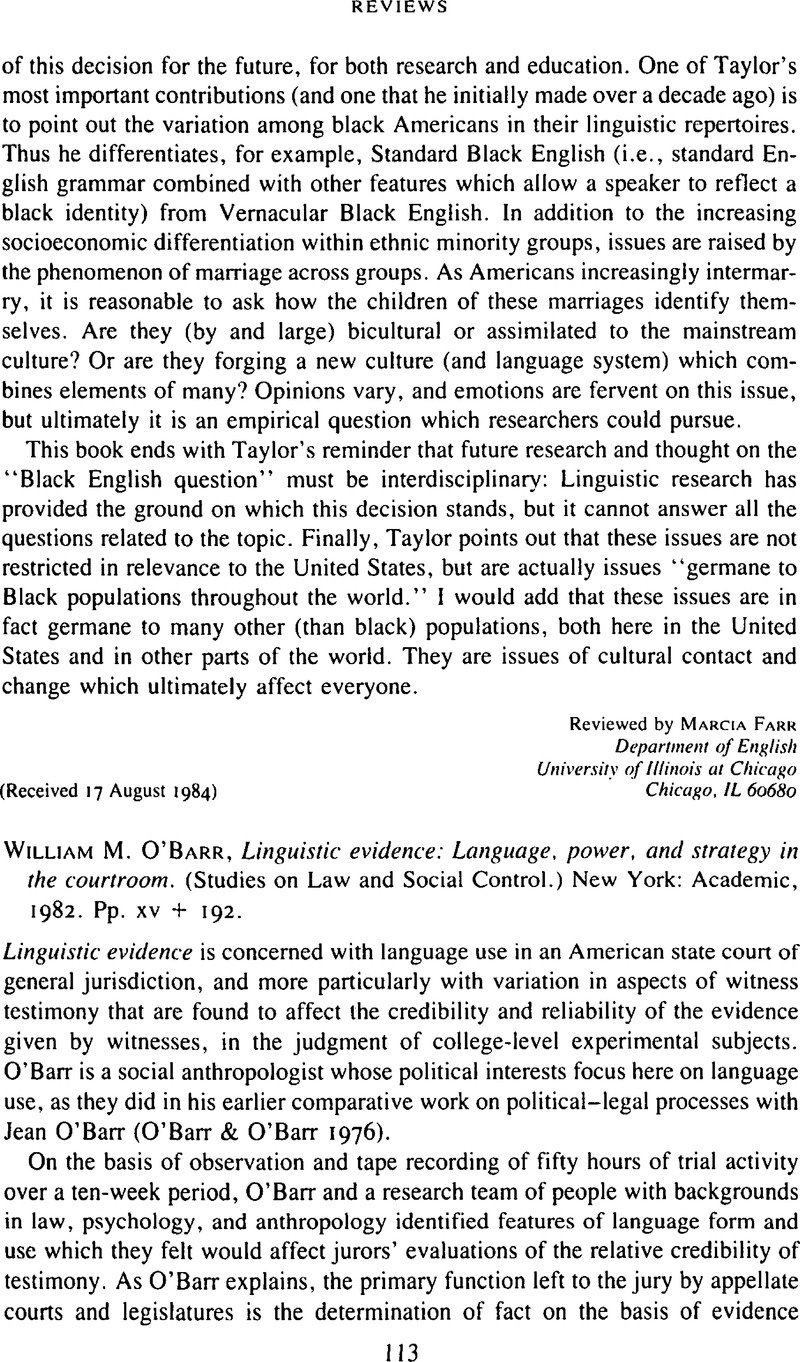No CrossRef data available.
Article contents
William M. O'Barr, Linguistic evidence: Language. power, and strategy in the courtroom. (Studies on Law and Social Control.) New York: Academic, 1982. Pp. xv + 192.
Published online by Cambridge University Press: 18 December 2008
Abstract
An abstract is not available for this content so a preview has been provided. Please use the Get access link above for information on how to access this content.

- Type
- Book Review
- Information
- Copyright
- Copyright © Cambridge University Press 1985
References
REFERENCES
Atkinson, J. M., & Drew, P. (1979). Order in court. Atlantic Highlands: Humanities Press.Google Scholar
Bennett, W. L. & Feldman, M. S. (1981). Reconstructing reality in the courtroom. London: Tavistock.Google Scholar
Duranti, A. (1981). The Samoan FONO: A sociolinguistic Study. (Pacific Linguistics. Series B, vol. 80.) Canberra: Department of Linguistics. R. S. Pac. S.. Australian National University.Google Scholar
Ervin-Tripp, S. (1972). On sociolinguistic rules: Alternation and co-occurrence. ln Gumperz, J. J. & Hymes, D. (eds.). Directions in sociolinguistics. N.Y.: Holt, Rinehart & Winston. 213–50.Google Scholar
Garfinkel, H. (1967). Studies in ethnomethodology. Englewood Cliffs. N.J.: Prentice-Hall.Google Scholar
Gumperz, J. (1964). Linguistic and social interaction in two communities. In Gumprez, J. J. & Hymes, D. (eds.). The ethnography of communication. American Arthropologist 66(6) 11:137–54.Google Scholar
Hymes, D. (1974). Foundations in sociolinguistics: An ethnographic approach. Philadelphia: University of Pennsylvania Press.Google Scholar
Lakoff, R. (1973). Language and woman's place. Language in Society 2:45–80. Also New York: Harper & Row. 1975.Google Scholar
Lavandera, B. (1978). Where does the sociolinguistic variable stop? Language in Society 7:171–82.Google Scholar
Malinowski, B. ([1923] 1938). The problem of meaning in primitive languages. In Ogedn, C. K. & Richards, I. A. (eds.). The meaning of meaning. New York: Harcourt Brace and World. 296–336.Google Scholar
Mehan, H.. Meihs, J. L.. Hartweik, A.. & Crowds, M. (1982). Identifying handicapped students. In Bacharach, S. B. (ed. ). Organizational behavior in schools and school districts. New York: Praeger. 381–427.Google Scholar
Rivera, C. (1983). An ethnographic sociolinguistic approach to language proficiency assessment. Clevedon: Multilingual Matters.Google Scholar


